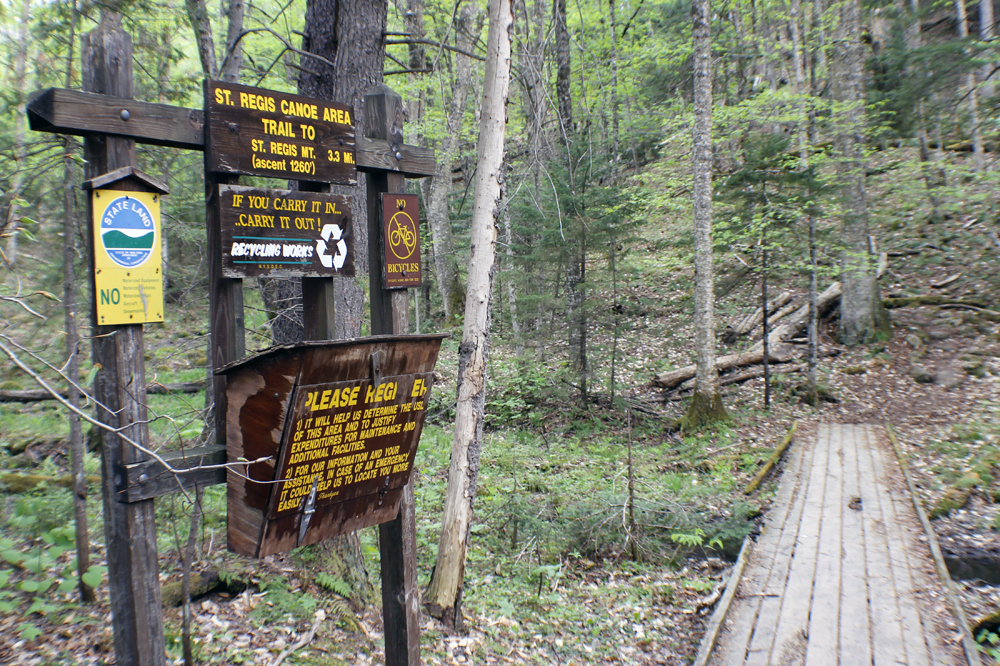Black flies buzz and bite
Garter snake slithers away
I’m glad snakes eat bugs
I lean my bike against my office wall and flip on the computer. After checking emails, I open a Word document and stare at the screen. Nothing comes. No words, no inspiration. The to-do list on my whiteboard grows. Out my window, the blue sky and sun taunt me: get out of that cement box!
With a water bottle, apple, extra layer and visor I slip on my pack and pedal to the Mount Saint Regis trailhead. Subarus and hatchbacks line the sandy parking lot. The heat builds and black flies nip my ears. The trail feels soft and duffy from lack of rain. My mind begins to prioritize. Problems that appeared unsolvable rotate into place. By the time I reach the summit, I possess an action plan for when I return to the office. I high-five the fire tower and turn to see Curt Stager, a familiar face.
Curt is a paleo climatologist, ecologist, writer and professor at Paul Smith’s College. As a student, I looked up to him because he’d written for National Geographic. Those golden magazines were my holy grail on rainy childhood days. My father dedicated an entire closet in our house to them – from those pages, I learned about the world and the beautiful, intriguing people with different faces, colors, and rituals that inhabit it.
The ties that bind.
We sit on a rock facing the valleys, ponds, lakes and mountains to the South. The wind keeps the black flies at bay and Curt offers me a hunk of cheese. He points to a patch of land where pieces of native pottery were discovered. How do you tell the story of people who have gone before us? How do you use their knowledge? What binds us together as humans through time and place? This is not the first time I’ve had these thoughts on a mountain top. There is something metaphorical about getting above a situation and seeing it with new eyes. Eagle eyes.
“What’s your favorite part about teaching?” I ask.
“The students.”
I nod. As we descend, he tells a story about a young man who sat in the back of the classroom and seemed disengaged. All signs and first impressions pointed towards the student dropping out or failing the class.
“Turns out he was a Latin scholar and bored to death.”
He points to a shallow pond.
“See the ripples?”
“Yep.”
“Those are mosquito larva.”
Oh, joy. I think to myself. Whether it’s a person, piece of pottery, or pond—there’s always more beneath the surface. So, what is it that ties us together? Fire? Drums? Or the sheer desire to escape four walled cement rooms for inspiration
Want to hike Mount Saint Regis?
Directions from Paul Smith’s College:
- Turn on to Keese Mill’s Road from Route 30
- Travel 2.6 miles to the parking lot on the left
- Cross the bridge, walk the access road for .10 miles and look for the trailhead on the right
- Hike 3.3 miles to the summit
- Enjoy!


